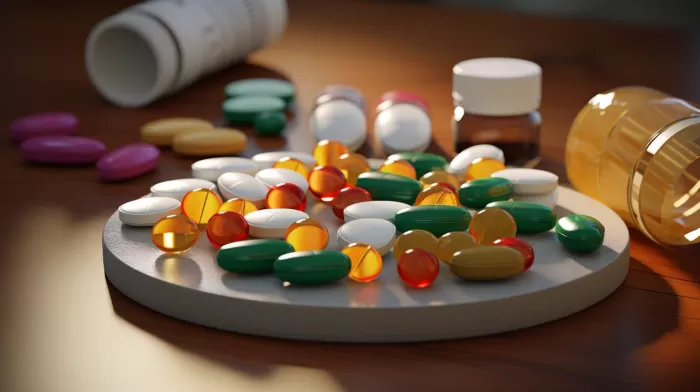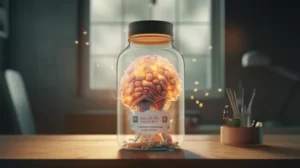In this article, I’ll address what to know when taking supplements along with prescription drugs. Then I’ll look at how to safely get off prescription drugs (when possible) and their safer alternatives.
Taking supplements and prescription drugs together
Over the years, I have repeatedly read from conventional medical doctors warning patients to take caution whenever taking a supplement along with their prescribed medications. I think it should be the other way around – doctors must take great caution to explain risks and benefits of drugs they’ve prescribed and be careful that by prescribing drugs they do not to interfere with beneficial supplements.
The fact is, there are some herbs and nutrients that potentially can compete for the same cellular receptor sites or interfere with similar liver detoxification (metabolism) pathways. No doctor or herbalist can remember all the drug-herb interactions possible. That’s why it is a good idea to check an online database to see if there are any known interactions between your supplements and drugs you prescribed, such as Drugs.com.
For starters, the blood thinner warfarin (Coumadin) is a very temperamental one. If you look on Drugs.com, you’ll find there are 202 drugs known to have a serious interaction with Coumadin (warfarin). So you know it will interfere with many supplements and even food. I had a patient tell me once that his doctor informed him not to consume any green leafy vegetables because it would throw off his Coumadin levels. I corrected him and told him that he should consume all the green leafy vegetables he wanted, and that we would simply adjust his Coumadin dosing accordingly through doing Prothrombin Time (PT) and International Normalization Ratio (INR) blood tests. If only all drugs could be so easily monitored!
Examples of potential supplement-drug interactions:
- Black cohosh: Used for menopausal and female hormone imbalances. Strongly metabolized through similar pathways as atorvastatin (Lipitor), acetaminophen (Tylenol), and alcohol.
- Primrose oil: An omega-3 oil source. Increases the effects of Coumadin (blood too thin) and decreases the effect of anti-seizure medications.
- Echinacea: Used to boost immune function to fight the common cold. Can enhance caffeine and other drugs that are metabolized through CYP450 liver pathway.
- Valerian root: Natural sedative. Many interactions, most notably with medications for sleep/anxiety, depression, and pain relief.
Other potential interactions to look up include saw palmetto (for prostate), kava kava (for sedation), ginseng, yohimbine, feverfew, gingko biloba, goldenseal, garlic, green tea, and ginger.
Even though supplements are not controlled by the FDA and typically not put through rigorous clinical trials like drugs are, we still have plenty of information about them and how they are metabolized. Thus, we can look to the databases to guide us. You don’t have to give up your supplements just because you are starting a new prescription drug. Likewise, you can start new supplements even if you are already taking a prescription drug.
Getting off prescription drugs
Have you ever thought how good it would be to eliminate the need for your prescription medications? For those common conditions, there are ways to effectively eliminate the need for drug treatment. This is where holistic medicine comes in. Let me address these conditions from a functional medicine approach and then you’ll better understand how to get off their prescription drug treatments. I’ll start with a common one: diabetes mellitus.
Consider that approximately one-fourth of persons over the age of 65 have diagnosed or yet undiagnosed diabetes mellitus. What are the reasons for such a high prevalence of this disease? Sedentary lifestyle, obesity, and poor dietary habits play major roles in addition to a genetic predisposition for it. Let me explain why this is so.
Just like many reversible illnesses, diabetes type 1 is an inflammatory autoimmune disease: the immune system attacks and destroys its own insulin-producing cells of the pancreas. Likewise, even though diabetes type 2 has previously been considered a metabolic disorder (and cannot be reversed without drugs) in which tissues are resistant to insulin, researchers now believe its insulin resistance is from immune system cells that attack tissues (also an autoimmune disease). And the newest diabetes type 1.5 (aka latent autoimmune diabetes of adults, or LADA) is where older adults are initially diagnosed with type 2 diabetes but wind up requiring insulin due to pancreatic islet cell failure (the cells that produce insulin), like in type 1 diabetes. Thus all three types are really autoimmune diseases. This immune hypersensitivity has its beginnings in the gut (intestinal health, foods), environment (personal care products, xenobiotics), and toxic thoughts/emotions (neurochemicals, hormones) which all influence genetic expression.
As for your gut health, this is your main “antigenic window” to your bloodstream. Your gut lining must discriminate between beneficial food molecules and the myriad of potentially harmful (immune system stimulating) molecules you ingest in the form of preservatives, dyes, medicines, and refined/processed foods that stimulate overgrowth of yeast and unhealthy bacteria. Low fiber diets lead to a lack of short-chain fatty acids acetate, propionate, and butyrate known to keep the intestinal mucosa strong and intact, which prevents antigenic molecules from entering your bloodstream.
Additionally, unresolved chronic stress affects neurotransmitters and your hypothalamic-pituitary-adrenal hormones which contribute to an adverse immune response.
As for environmental chemicals, they enter your bloodstream through skin, lungs, and the intestinal tract to disrupt hormone receptors or act as antigenic triggers to inflammation.
You want to know how to eliminate the need for diabetes medications? The most impressive rapid result of reversing (yes reversing, not just treating) diabetes I know of is seen with clients of Dr. Gabriel Cousin’s Tree of Life Clinic in Patagonia, Ariz. Read more here or watch the 12-minute trailer here. As you will see, this holistic approach requires a person to have real self-discipline and self-love.
In my next article, I’ll discuss holistic treatments for high cholesterol, heart disease, hypertension, and eliminating their drugs when possible.



